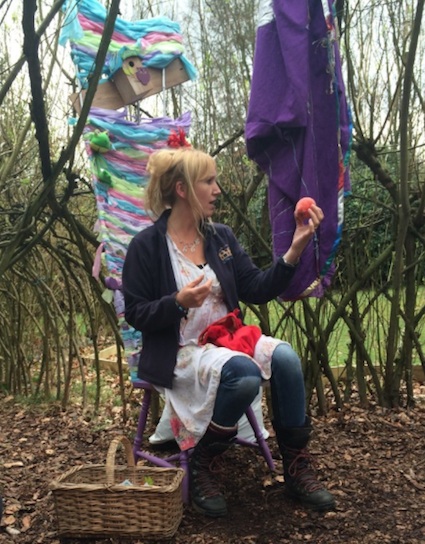
Just before the Easter break, I had the privilege of being part of the I’m a Kid Get Me Out of Here conference organised by Kirklees CC and based at the brilliant Cliffe House – a council run outdoor studies and conference centre. If you click on the link you can find a detailed account of the day on Dughall McCormack’s blog.
Catherine Heppenstall, ran a really interesting workshop about oral story telling. To help the participants develop their own confidence at telling stories, she has developed an approach which provides lots of prompts. She has kindly allowed me to share the activity – thank you Catherine!
Likewise, thanks to Dughall McCormack for giving me permission to use 3 of his photos – numbers 1, 4 and 6.

Firstly, you need a stick. Using willow cut from the Cliffe House grounds, Catherine had prepared some for the workshop in advance. By adding a little bit of coloured wool, story wands have been created. If you have a willow den or structure which needs pruning, then this activity would follow on nicely from such practical work – just remember that willow should be pruned overwinter and not in the summer.
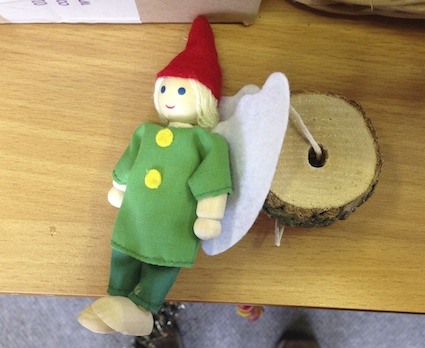
Next you choose a character. Catherine had placed these and many other characters on a “character bush” outside. So everyone had to choose a main character for their story. If you look at the above photo, can you see that the character is attached to a wooden disc. Again, these were cut from trees on the Cliffe House site and drilled. So this is also possible for schools which have access to young trees which need some attention.
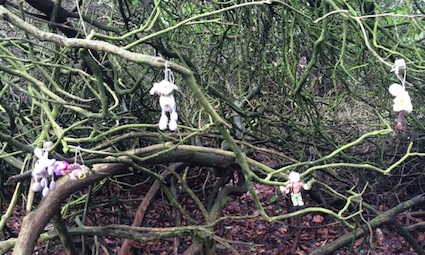
Naturally, the character needs a profile. As well as physical descriptions, remembering some of their emotional attributes can be good too. Below is an adjective flower for this purpose. This gets added by threading the wooden disc onto the story wand.
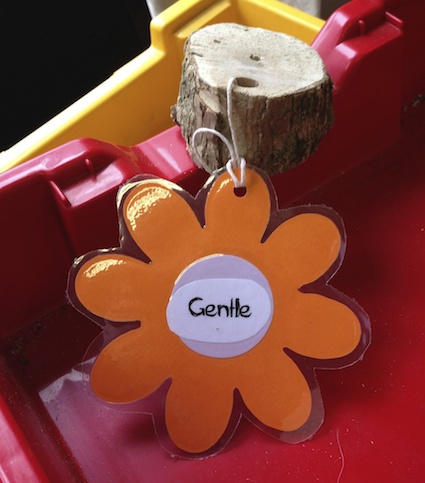
Every good story has a decent setting. Prompts for settings were hung up in a different part of the story telling area. As you can see, the elements of the story are being built up in a visual and physical way.
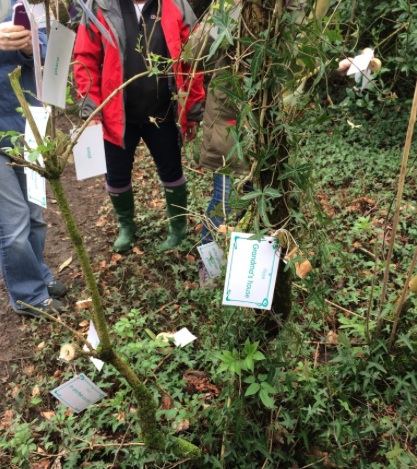
It also helps children and adults remember that just because we are telling stories outside, our imaginations can take us to any location we want.

To help with the development of the story, there were lots of events to choose from which create a problem, scenario or situation.
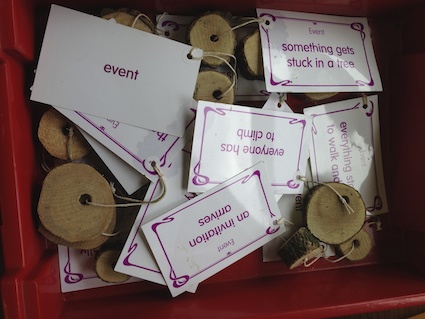
There were also blank cards available to write your own ideas for any element of the story…
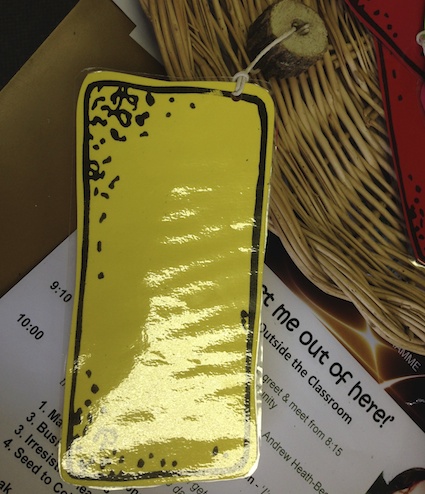
Quite often a main character will meet and interact with other characters as the story develops.
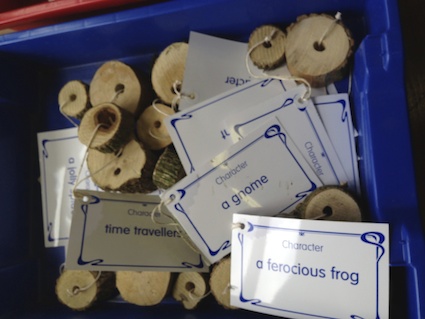
Finally, every story needs a decent ending. Again, a variety of prompts were available.
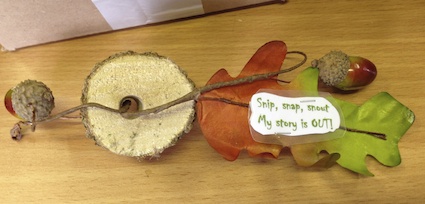
Once the elements of the story have been added to the wand, you are ready to tell your story. The framework provides a portable prompt which can be taken anywhere.
For me, this approach to story telling typified the ethos at Cliffe House. It is not your average outdoor centre. Practical and creative approaches were evident all around the building and the grounds. I thought it was good that both teachers and children are learning that literacy and maths as well as traditional outdoor activities can happen in residential settings too.
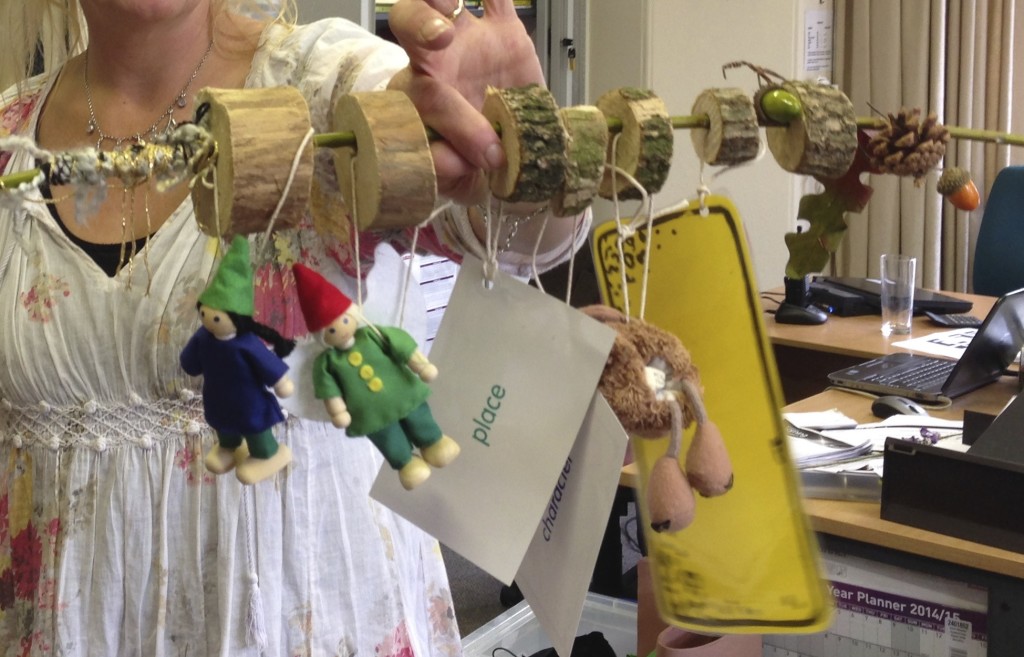
I also feel that this approach is very transferable to a school ground or other place. All you need are places to hang or put the different elements of of the stories. This could be fences, beside a gate, near a door or within a raised bed. If you do not have wooden disks, then these can be purchased from Muddy Faces and garden canes could be a substitute wand.
I would love to know about other creative outdoor approaches you have come across to oral story telling too. Never forget that the spoken word often precedes the written word, so developing oral story telling skills supports the development of children’s written stories too.




















What a fab idea for those unsure about story telling & over time confidence is bound to grow for this approach. I can see older children loving this as a writing prompt idea too. As I was reading it, I was just thinking that the pre drilled discs from Muddy Faces would be ideal for this! Great post as always xx
Agreed – the drilled discs would work well along with the thin canes available from garden centres. I think it’s a gentle way into learning outside for some teachers.